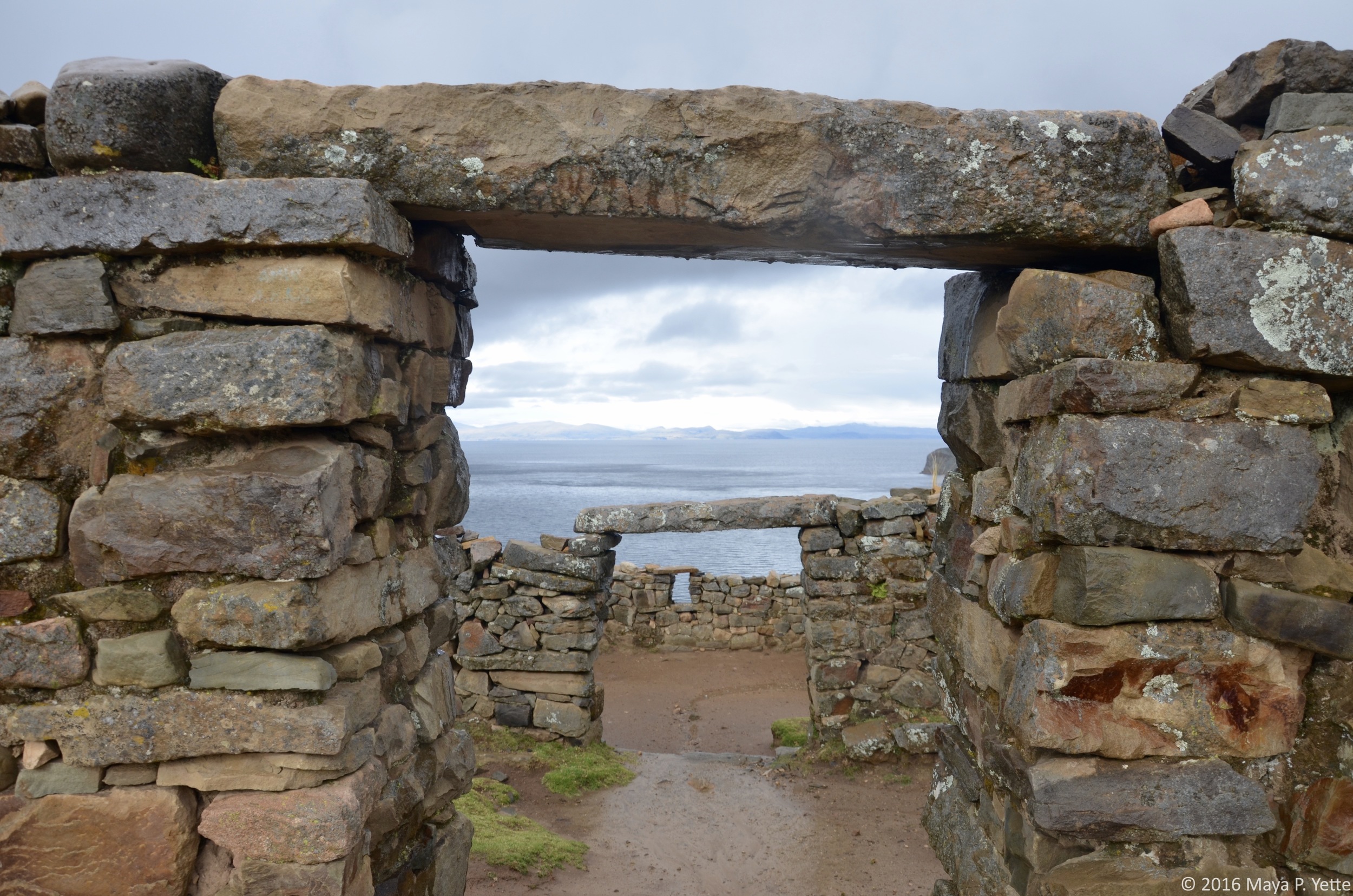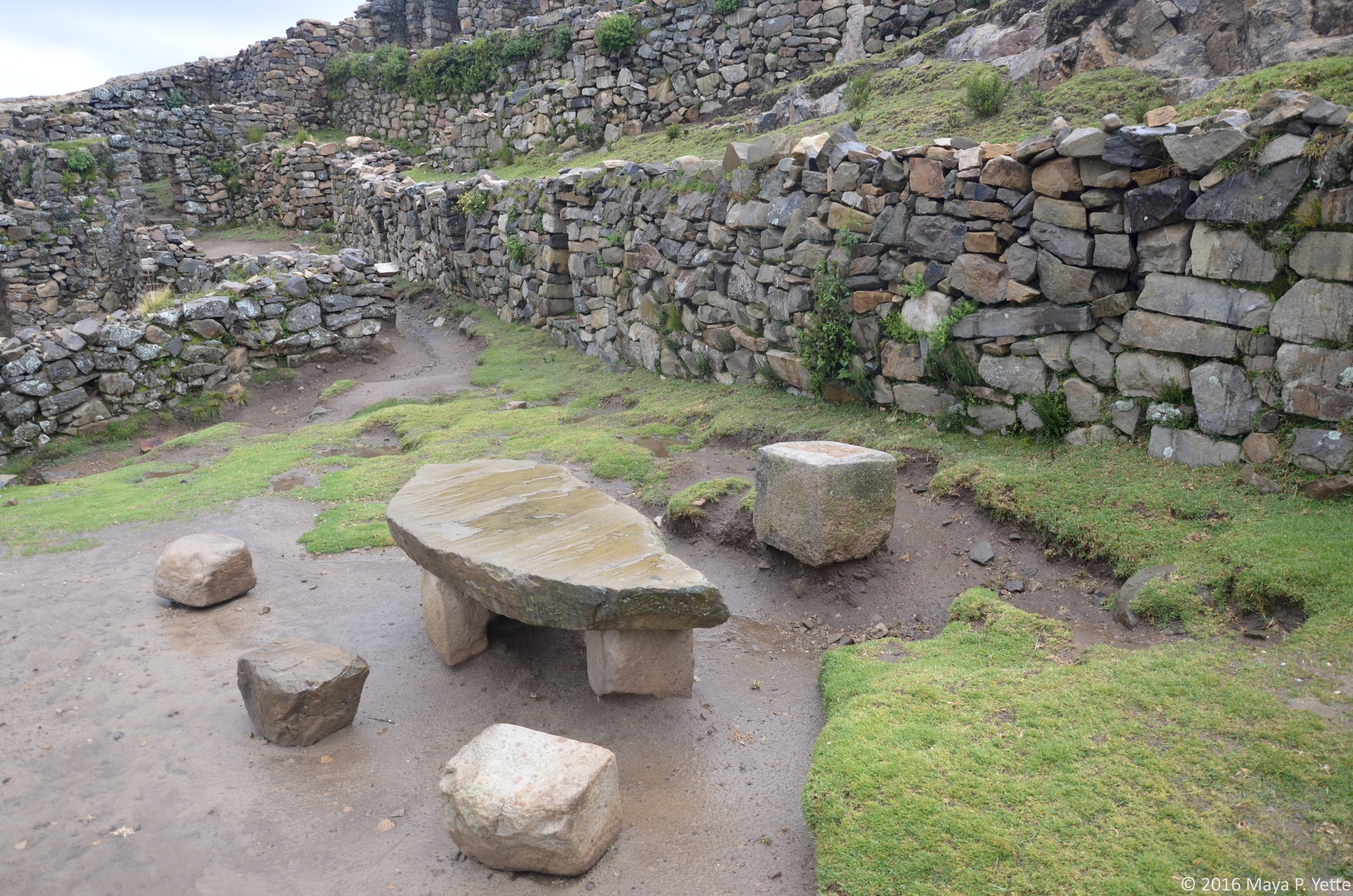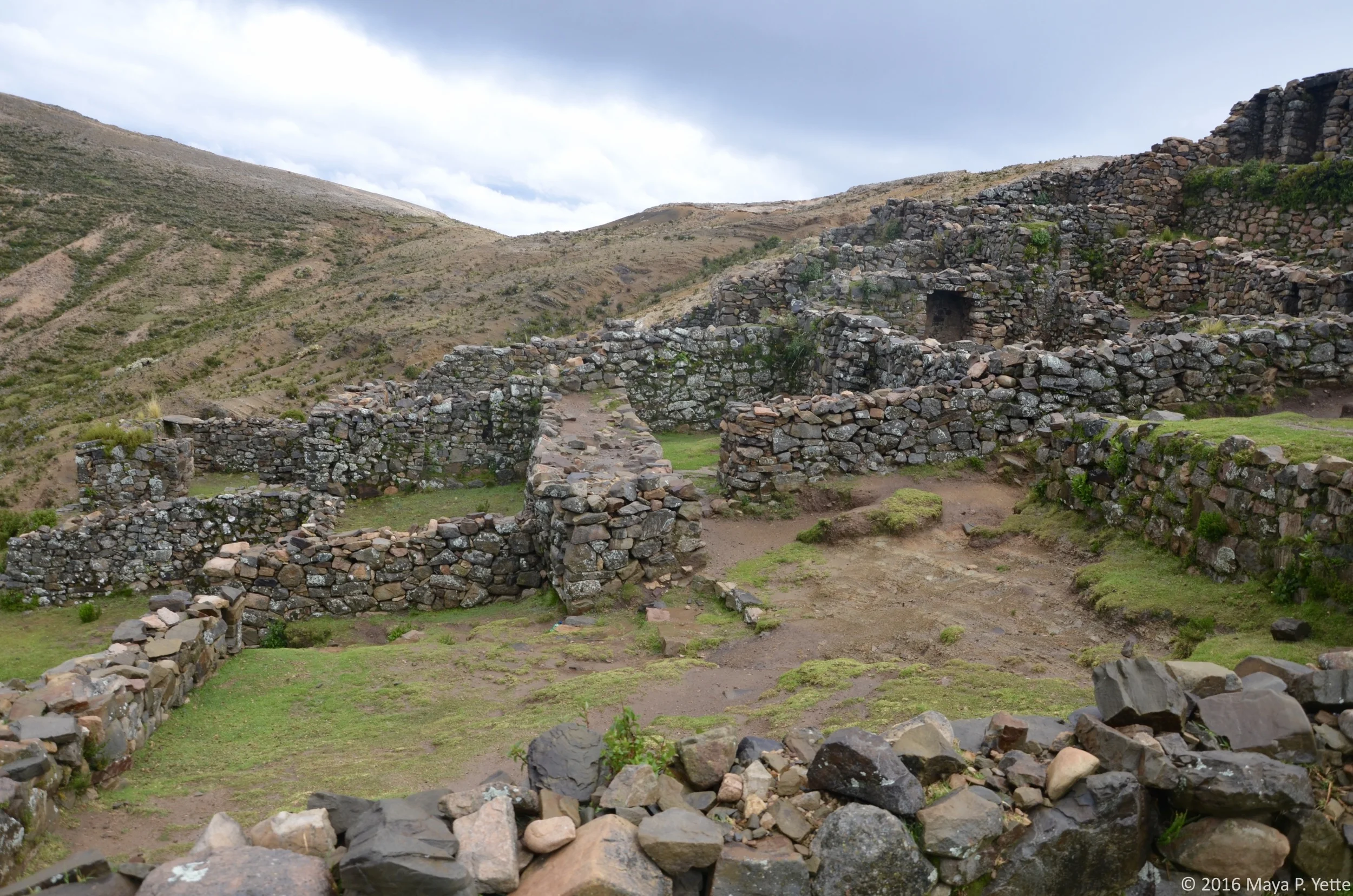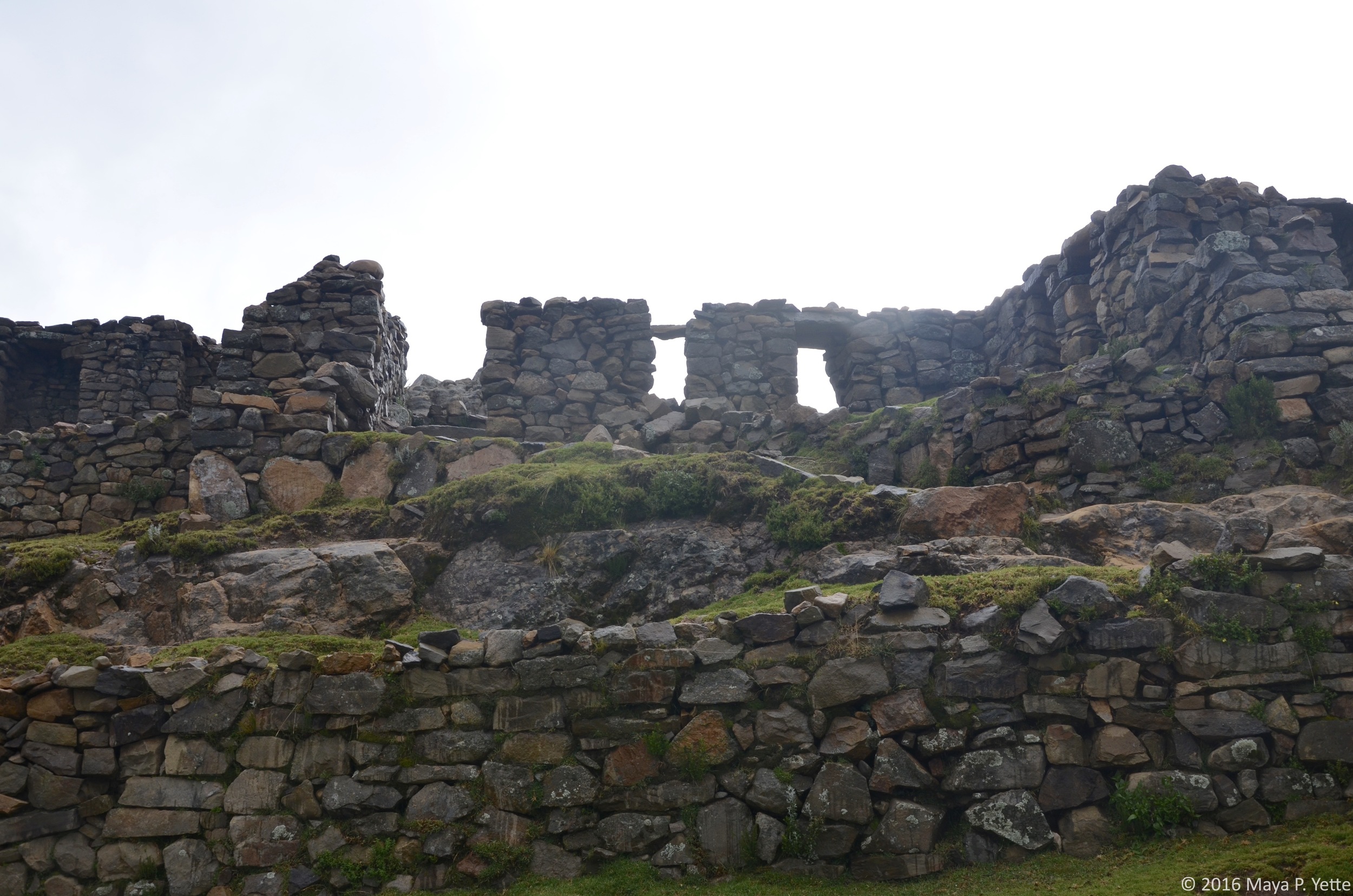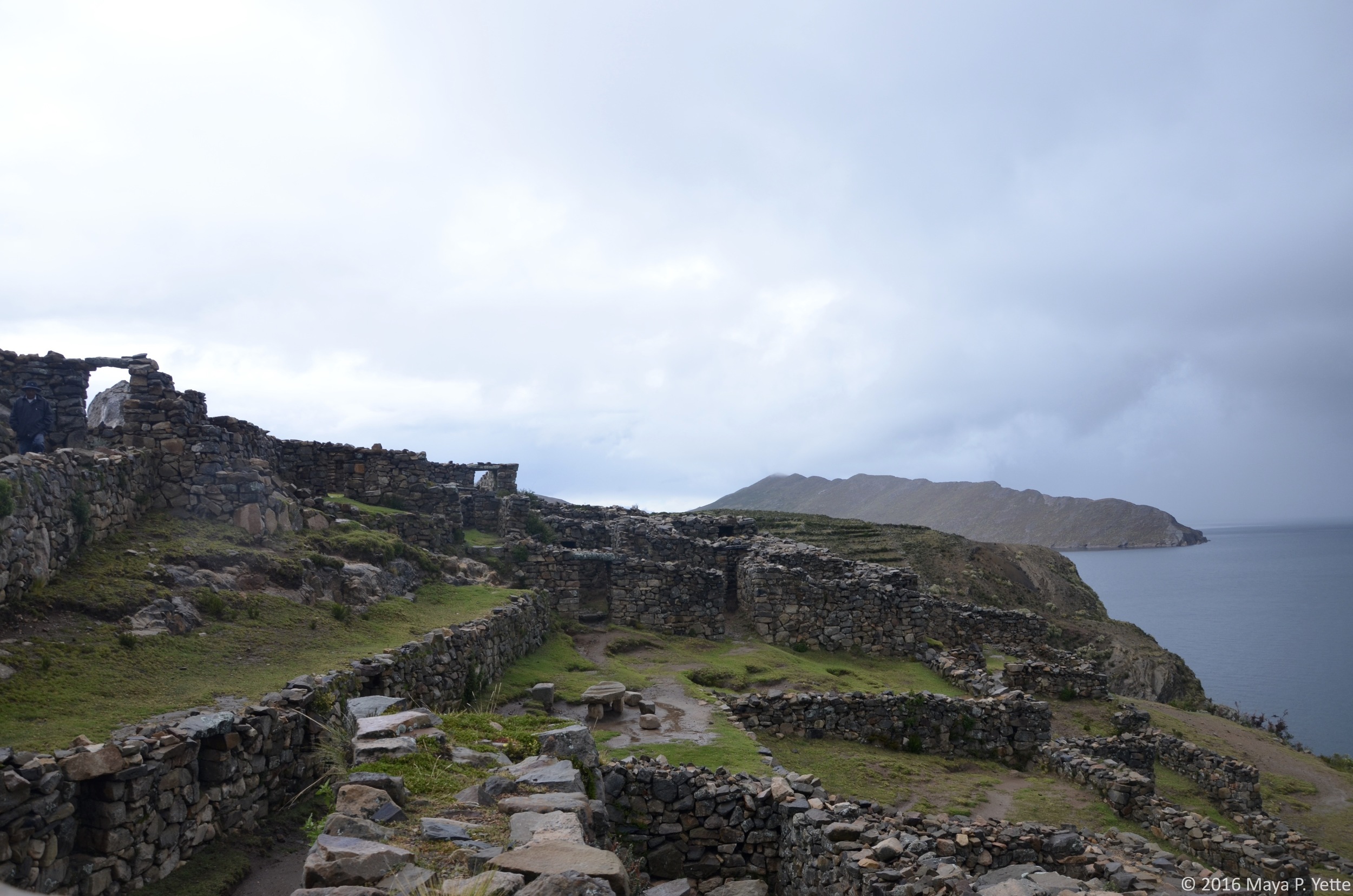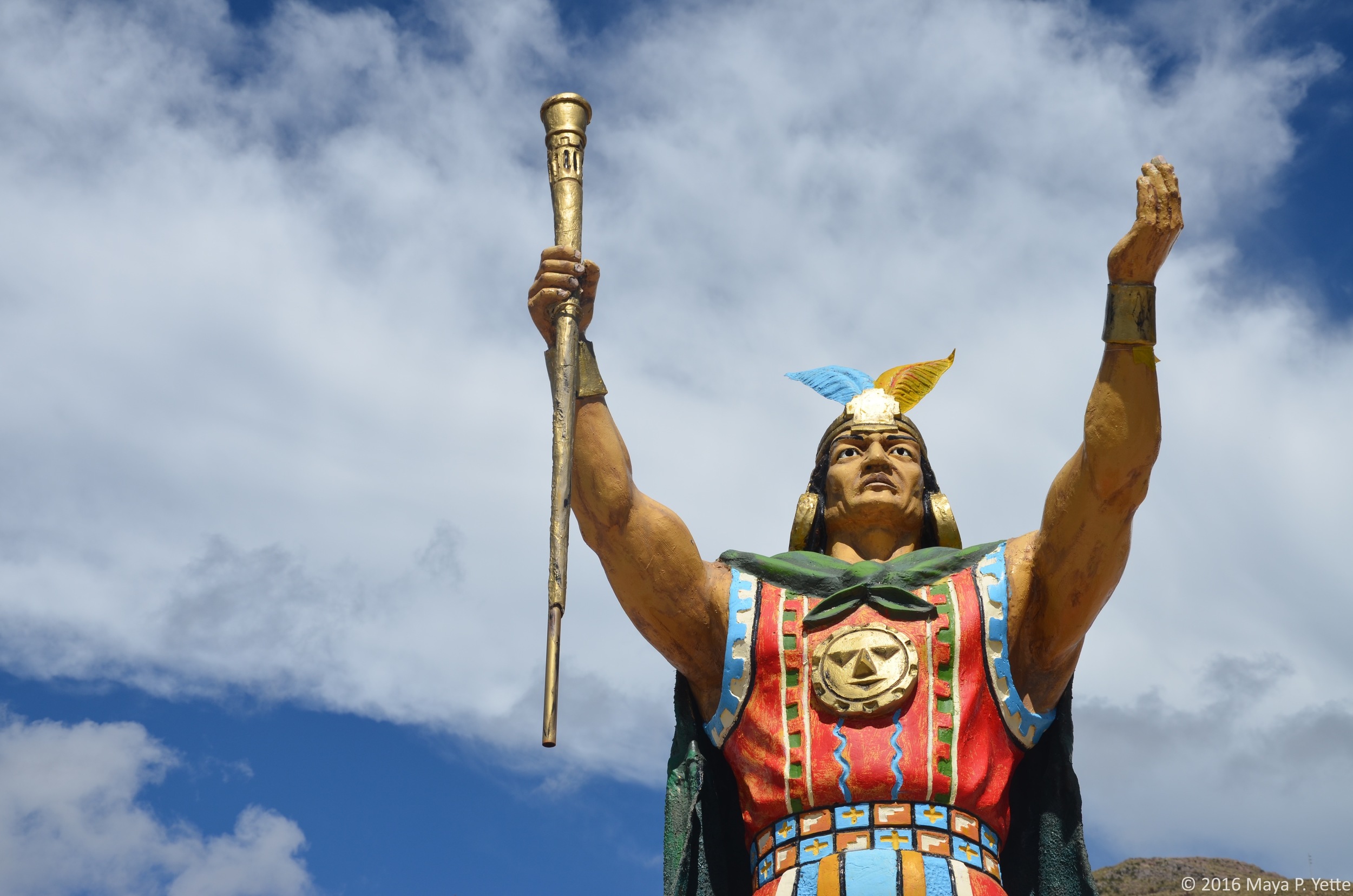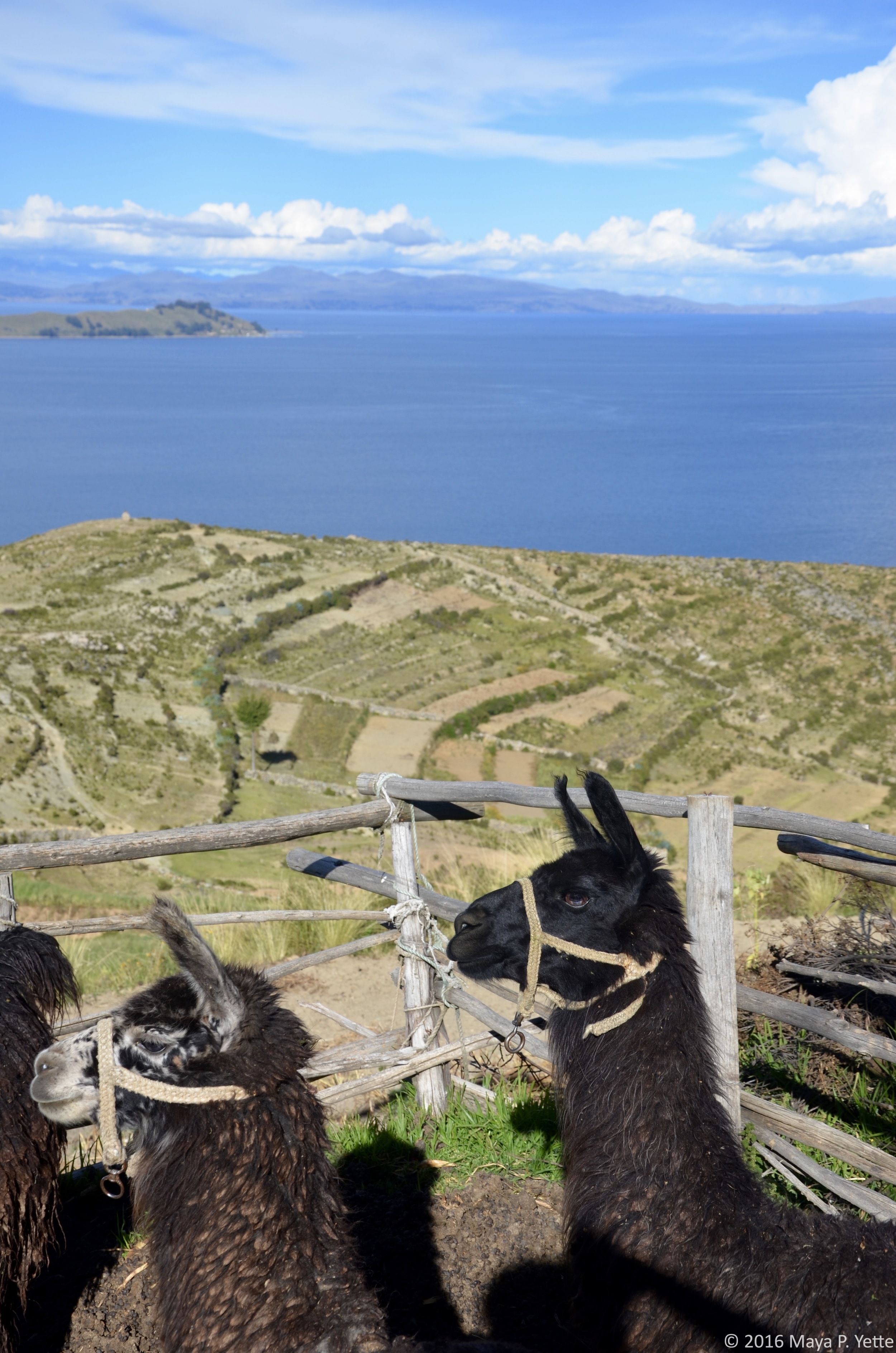One Saturday morning I woke up early and headed to Copacabana, Bolivia with a few of my friends. Copacabana sits on the edge of Lake Titicaca, which is both the largest lake in South America and the highest navigable body of water in the world. The lake stretches between Bolivia on the east and Peru on the west. From La Paz, getting to Copacabana is an easy but cramped five-hour bus ride. When we arrived, we grabbed lunch in town, which was covered in what looked like snow (we later learned it had hailed that morning) and then caught a ferry that brought us to Isla del Sol (Island of the Sun) after an hour and a half crossing the lake.
Isla del Sol, home to about 800 families, sits on the Bolivian side of the lake and is believed by the Incas to be the birthplace of the sun. As we arrived at the dock on the southern side of the island, we were greeted by numerous cholitas and all of the donkeys that are used to carry goods across the island. There are no cars or paved roads on Isla del Sol, a fact that I didn’t fully appreciate until we were actually there. Isla del Sol is around 4,100 meters at its highest point, about the same as La Paz, but the air felt thinner there and I was winded more than normal walking up and down the hills that crisscross the island.
After we dropped our bags off at our hostel, we set out to explore. We hoped to reach one of the 80 Inca ruins on the island and hike up to the mirador, at the highest point on the island, where we would have a view of the island and the lake below. Isla del Sol is beautiful and at every turn you run into one of the many donkeys, llama or sheep that call the island home.
We walked and admired the view, stopping to take pictures along the way. Eventually, we realized that the Inca ruins we were in search of were back towards our hostel, in the opposite direction of the mirador. Knowing that we planned to see the more famous Inca ruins the next day, we scrapped those plans and stopped for a bottle of wine on a patio overlooking the lake. Sufficiently rested, we continued up to the mirador and were rewarded with beautiful vistas of Isla del Sol and Lake Titicaca.
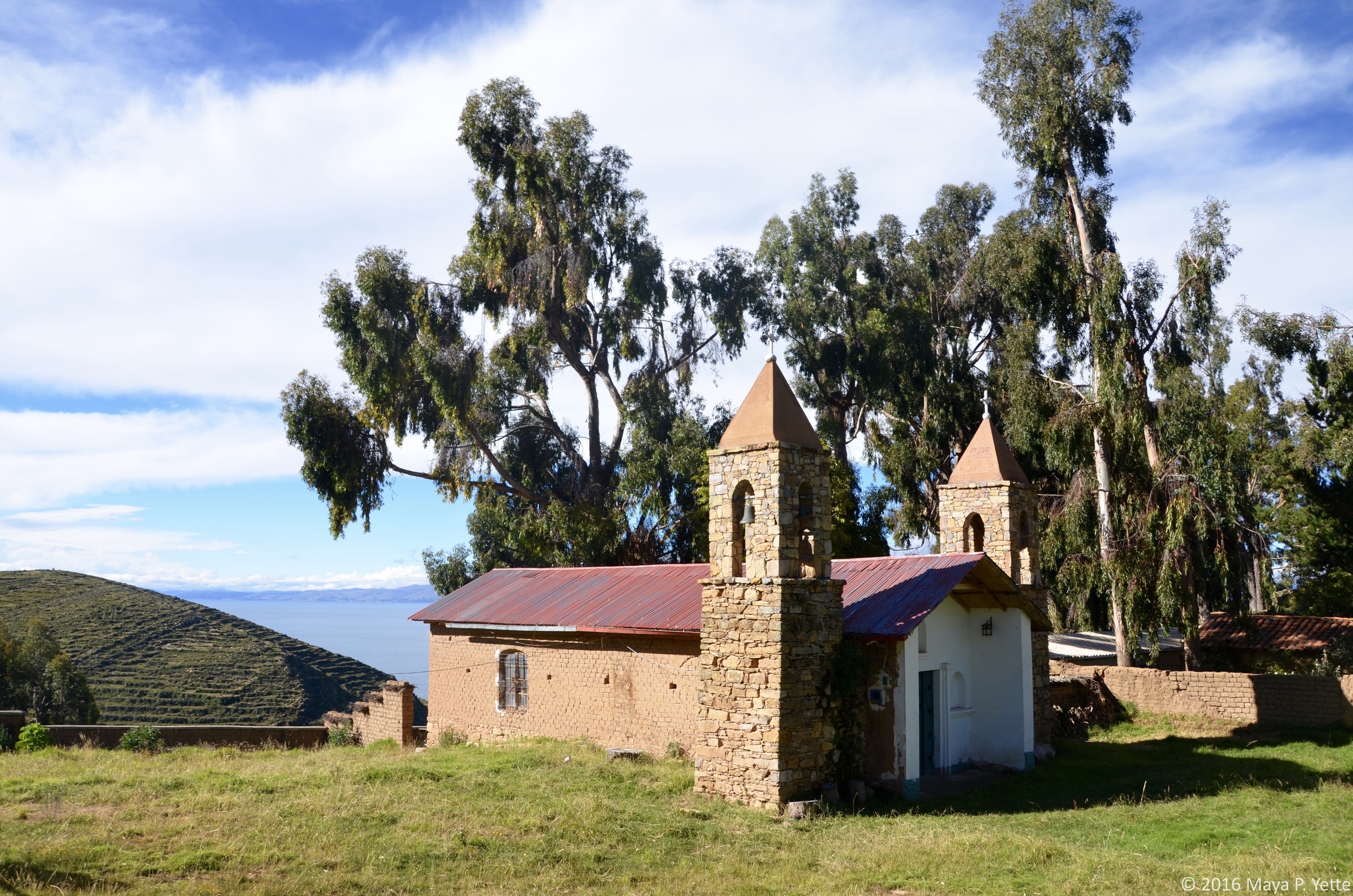
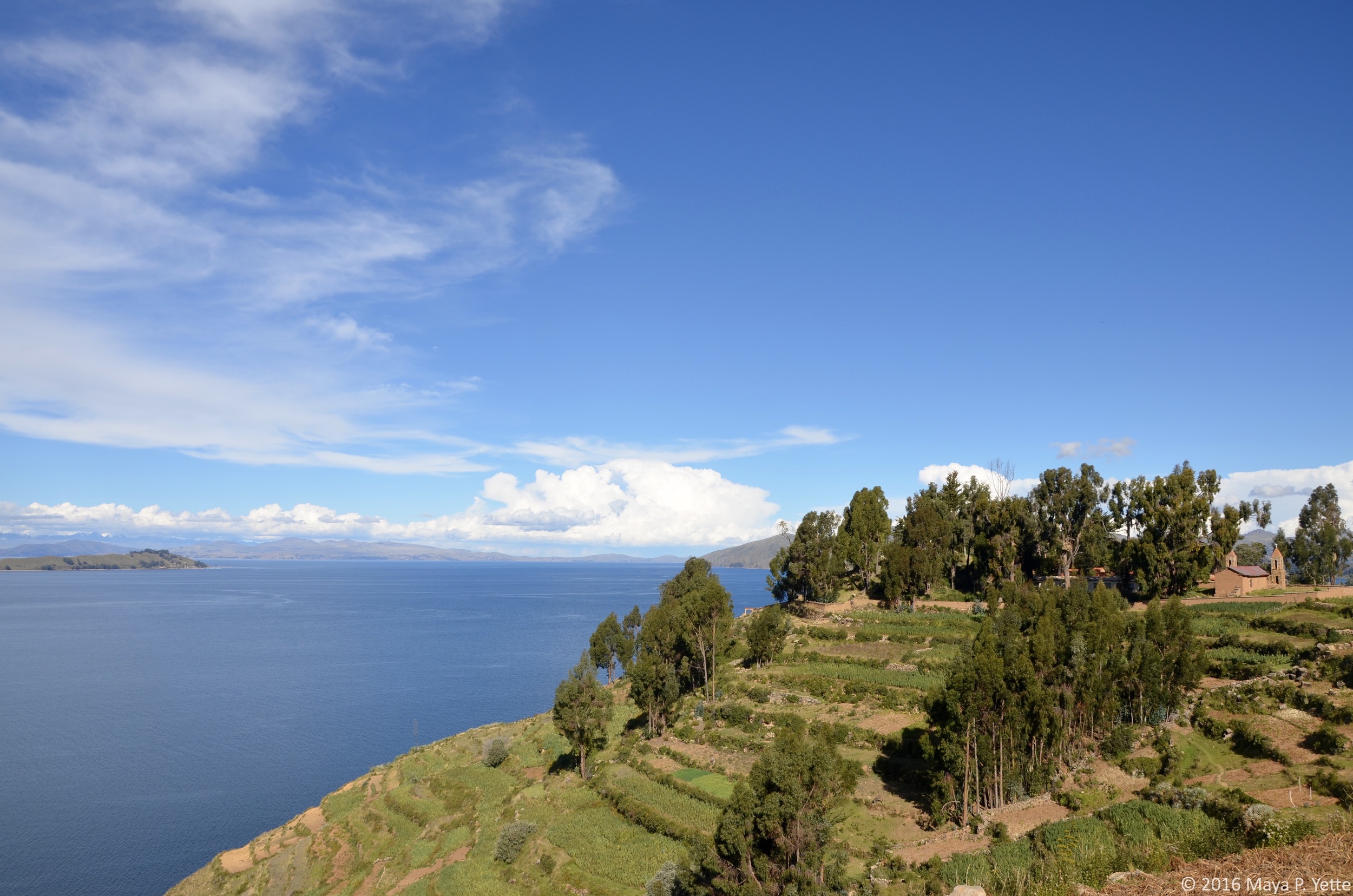
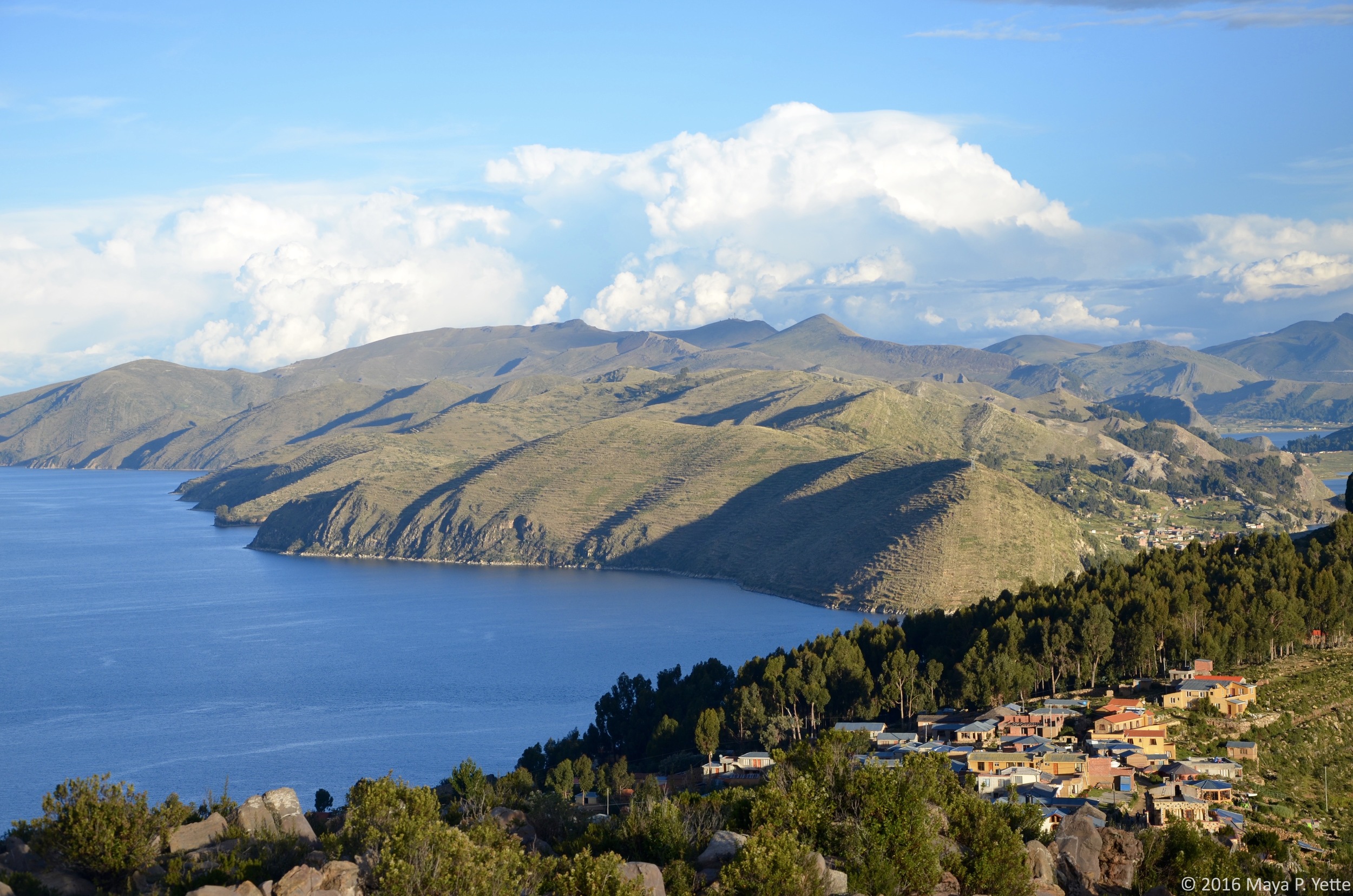

On our way back down the mountain, we ran into some fellow Remotes who we did not know were also on Isla del Sol for the weekend. We ended up having dinner with them and then trekking back to our side of the island in the cold, dark and rain, with only our iPhone flashlights to guide us (and wondering the entire way whether we were stepping on mud or donkey droppings).
The rain did not abate overnight and on Sunday morning we woke up to a torrential downpour. We had to catch an 11:30 a.m. ferry back to Copacabana to get the bus to La Paz so we did not have time to wait the storm out. We hired a ferry to take us to the northern side of the island where there are pretty extensive Inca ruins. The Palacio del Inca is a huge complex of stone walls and doorways overlooking the lake, also known as El Laberinto (the Labyrinth). As we reached the top of the mountain where the ruins are situated, the rain slowed to a drizzle and we were able to enjoy our last morning on Isla del Sol, walking through the ruins, ducking through doorways and envisioning what life must have been like for the Incas on Lake Titicaca.

